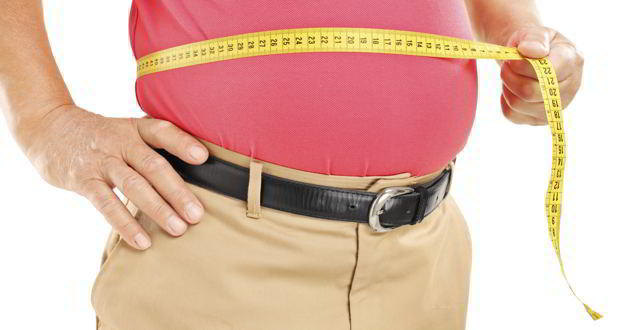What Is Childhood Obesity?
Children who have a body mass index (BMI) at the same level or higher than 95 percent of their peers are considered to be obese. BMI is a tool used to determine your “weight status.” BMI is calculated using your height and weight. Your BMI percentile (where your BMI value falls in relation to other people) is then determined using your gender and age.
Childhood obesity is a serious health threat to children. Kids in the obese category have surpassed simply being overweight and are at risk for a number of chronic health conditions. Poor health stemming from childhood obesity can continue into adulthood.
Childhood obesity doesn’t just affect physical health. Children and teens who are overweight or obese can become depressed and have poor self-image and self-esteem.
Causes of Childhood Obesity
Family history, psychological factors, and lifestyle all play a role in childhood obesity. Children whose parents or other family members are overweight or obese are more likely to follow suit. But the main cause of childhood obesity is a combination of eating too much and exercising too little.
A poor diet containing high levels of fat or sugar and few nutrients can cause kids to gain weight quickly. Fast food, candy, and soft drinks are common culprits. The U.S. Department of Health & Human Services (HHS) reports that 32 percent of adolescent girls and 52 percent of adolescent boys in the United States drink 24 ounces of soda — or more — per day.
Convenience foods, such as frozen dinners, salty snacks, and canned pastas, can also contribute to unhealthy weight gain. Some children become obese because their parents don’t know how to choose or prepare healthy foods. Other families may not be able to easily afford fresh fruits, vegetables, and meats.
Not enough physical activity can be another cause of childhood obesity. People of all ages tend to gain weight when they’re less active. Exercise burns calories and helps you maintain a healthy weight. Children who aren’t encouraged to be active may be less likely to burn extra calories through sports, time on the playground, or other forms of physical activity.
Psychological issues may also lead to obesity in some children. Kids and teens who are bored, stressed, or depressed may eat more to cope with negative emotions.
Health Risks Associated with Childhood Obesity
Children who are obese have a higher risk of developing health problems than their peers who maintain a healthy weight. Diabetes, heart disease, and asthma are among the most serious risks.
Diabetes
Type 2 diabetes is a condition in which your body doesn’t metabolize glucose properly. Diabetes can lead to eye disease, nerve damage, and kidney dysfunction. Children and adults who are overweight are more likely to develop type 2 diabetes. However, the condition may be reversible through diet and lifestyle changes.
Heart Disease
High cholesterol and high blood pressure raise the risk of future heart disease in obese children. Foods that are high in fat and salt may cause cholesterol and blood pressure levels to rise. Heart attack and stroke are two potential complications of heart disease.
Asthma
Asthma is chronic inflammation of the lung’s airways. Obesity is the most common comorbidity (when two diseases occur in the same person at the same time) with asthma, but researchers aren’t sure exactly how the two conditions are linked. According to a recent study published in the journal Asthma Research and Practice, about 38% of adults with asthma in the United States are also obese. That same study found that obesity may be a risk factor for more severe asthma in some, but not all, people with obesity.
Sleep Disorders
Kids and teens who are obese may also suffer from sleep disorders, such as excessive snoring and sleep apnea. Extra weight in the neck area can block their airways.
Joint Pain
Your child may also experience joint stiffness, pain, and limited range of motion from carrying excess weight. In many cases, losing weight can eliminate joint problems.
Healthy Eating and Nutrition for Obese Children
Changing the eating habits of obese children is absolutely essential. Parental influence shapes your child’s eating patterns. Most kids eat what their parents buy, so healthy eating needs to start with you.
Start your nutrition overhaul by limiting sweets and soft drinks in your home. Even drinks made from 100-percent juice can be high in calories. Instead, serve water and lower-fat or nonfat milk with meals. Cut back your fast food consumption and make a conscious effort to cook more. Preparing a meal and eating together is not only healthy in a nutritional sense, but it’s also an excellent way to sneak in some family time.
Center your meals and snacks around fresh foods instead of processed items, baked goods, or salty snacks. Try:
- fresh fruits and vegetables
- lean proteins, such as chicken and fish
- whole grains, such as brown rice, whole-wheat pasta, and whole-grain breads
- low-fat dairy products, including skim milk, low-fat plain yogurt, and low-fat cheese
Chances are good that your overweight or obese child will drop some weight as they transition to a healthier way of eating. Consult your pediatrician if weight loss doesn’t occur. You may need additional help from a nutritionist or dietician.
Lifestyle Changes to Fight Childhood Obesity
There are several different strategies that can help prevent childhood obesity.
Increase Physical Activity
Increase your child’s level of physical activity to help them shed weight safely. Use the word “activity” instead of “exercise” or “workout” to keep them interested. Playing hopscotch outside, for example, may be more appealing to a 7-year-old than jogging around the block. Consider encouraging your child to try a sport for which they’ve expressed an interest.
The U.S. Centers for Disease Control and Prevention recommends that children get at least one hour’s worth of exercise daily to remain healthy.
More Family Activities
Find activities the entire family can enjoy together. This is not only a great way to bond, but it also helps your child learn by example. Hiking, swimming, or even playing tag can help your child get active and start on the path to a healthier weight. Be sure to vary activities to prevent boredom.
Cut Down on Screen Time
Limit screen time, too. Kids who spend several hours a day watching television, playing computer games, or using their smartphones or other devices are more likely to be overweight. According to studies reported by the Harvard School of Public Health, the reason for this may be twofold. First, screen time eats into time that could be spent doing physical activities instead. And second, more time in front of the TV means more time for snacking, and more exposure to ads for the high-sugar, high-fat foods that make up most food marketing.
Outlook for Childhood Obesity
Childhood obesity is a serious issue in the United States. However, with proper education and support, children can learn healthier ways to cope with their problems, prepare meals, and stay active. This support must come from the adults in their lives: parents, teachers, and other caregivers. Help your children stay healthier for longer by preparing nutritious foods for them and encouraging them to get plenty of exercise.
-
True weight loss story: How I lost 37 kg in ten months
-
10 best Pilates moves for effective weight loss
Vide
-
Diet Pills To Lose Weight Fast?
Here are some tips if you want to lose weight fast and naturally There
-
Online weight loss Slimming Centre In Malaysia
Have you ever taken note of an online weight burn scheme up to now? On
-
Gain Mass and Weight Fast If you can’t Get ripped
NO3 MAX Pump Review – NO3 Max Pump Are you feeling a specific gu
-
Discover Out Ways To Lose Weight Swiftly With Minimum Side Results?
Every particular person has a query in thoughts on the right way to lo
- DON'T MISS
- Two Simple Weight Loss Tricks That Work
- Green Tea: The Weight Loss Drink Miracle
- Weight Loss Procedures and Products that Actually Get Results
- You Can Start To Lose Weight Today
- Dancing, Weight Loss and Mental Wellness
- Weight Loss Diet
- Exercises to lose weight from your upper body
- Weight Loss Tip #45: Pack your gym bag the night before
- Losing Weight Rapidly
- How to Shed extra pounds – Taking Fat loss to another level!




